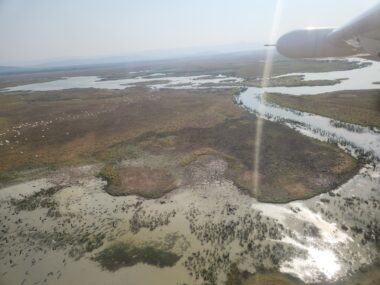AEMO’s INTEGRATED SYSTEM PLAN
QUOTES AND EXPERTS FOR COMMENT
Wednesday, June 26. The following experts are available to comment on AEMO’s Integrated System Plan, which is a 25-year roadmap to transition the National Electricity Market (NEM) to net zero by 2050.
The ISP confirms that renewable energy backed by storage is the lowest-cost way to supply electricity to homes and businesses as Australia transitions to a net-zero economy.
Australia’s move to clean energy is well underway, with 40% of the electricity in our main national grid now coming from renewable sources. This is delivering cheaper, cleaner and more reliable energy as our ageing and unreliable coal-fired power stations start to close.
AEMO says the ISP is a clear call to investors, industry and government to ensure generation, storage and transmission is urgently delivered so Australians have access to low cost, reliable electricity.
To arrange interviews please contact:
Rebecca Gredley on 0484 008 095 or [email protected] or
Jemimah Taylor on 0478 924 425 or [email protected] (for requests before 9am)
Stephanie Bashir, principal of Nexa Advisory, has expertise across the energy value chain in technical, commercial, strategic, policy and advisory capacities. She previously led the policy vision and strategy at AGL Energy as Senior Director of Public Policy.
Stephanie said: “It is good to see that AEMO have listened to stakeholder concerns, and in this version of the ISP have brought forward smaller less complex transmission projects, as well identifying a number of them that can be delivered as non-network solutions. This will definitely help get the transition back on track.
“We need to stick to the plan to ensure the transition delivers reliable and affordable electricity. We need to worry about powering Australia from 2025 - even if Australia has a grown up discussion about nuclear power during the next Federal election campaign, building it from a standing start would likely take close to two decades.
“AEMO has rightly emphasised the critical need for investment, particularly over the next 15 years, to transition while maintaining reliable and affordable electricity for consumers.
“To ensure that happens we need investment certainty. The energy transition cannot be the victim of political game playing. Nationally significant projects cannot languish in purgatory, drowned by planning and regulatory processes that are not fit for purpose.”
Johanna Bowyer, lead analyst for Australian electricity at Institute for Energy Economics and Financial Analysis (IEEFA), is an expert on trends in the National Electricity Market, energy policy, and energy market finance. Johanna previously worked at CSIRO, Solar Analytics and Suntech and as a management consultant at Kearney.
Johanna said: "AEMO's ISP shows how Australia can reach 82% renewables by 2030 and 99% renewables by 2050, up from around 40% renewables in 2023. The ISP is centered around renewable energy generation due to the low cost of renewable energy technologies.
"AEMO's plan shows that it is key to accelerate the build-out of renewables, storage and transmission to enable emissions reductions at lowest cost. AEMO's ISP calls for ongoing investment in renewables in the NEM. There is clearly interest from developers, with the first auction of the Capacity Investment Scheme receiving 40GW of project registrations.
"Electrification of households and businesses is a major part of AEMO's plan. IEEFA's research has shown that transitioning to efficient electric appliances could save consumers billions of dollars in ongoing energy costs.
"AEMO's modelling shows that distributed energy resources like rooftop solar, batteries and electric vehicles will be a key component of the energy transition. IEEFA's research shows that action is needed to develop the standards, regulations and markets to support strong uptake and effective integration of these resources."
Andrew Bray, national director of RE-Alliance, can discuss implementing a renewable energy future that delivers for regional communities, and the jobs and economic benefits of building renewable assets in communities dependent on fossil fuels.
Andrew said: “Australia expects to generate 82% of our electricity from renewable sources by 2030. The good news is, we’re close to halfway there with 40% of our electricity coming from renewables last year which will increase to 50% by the end of next year.
“Given these ageing coal generators are on their last legs, we need more renewables and storage built to lower the cost of electricity generation. The longer we wait, the more we’ll pay through our power bills because we need inexpensive renewables to put downward pressure on power bills.
“AEMO's plan has clearly identified that a successful shift to an economy powered by renewables is dependent on building trust with regional communities and engaging consumers in the shift.”
Marilyne Crestias, interim CEO of Clean Energy Investor Group, has vast experience on the economics of energy markets, renewable energy auction design, climate change, and management of natural resources. She led the design of the largest renewable energy auction in Australia and the delivery of legislation to support the Victorian Renewable Energy Target.
Marilyne said: “The release of AEMO’s 2024 Integrated System Plan marks a critical milestone for Australia’s renewable energy investors. It provides a comprehensive roadmap that strengthens investor confidence and underscores the transformative potential of clean energy investments.
"In response to challenges highlighted by the ISP, we call on policymakers to prioritise regulatory reforms that improve planning and environmental assessments. Clear and supportive policies are crucial to unlocking capital and advancing Australia’s transition to a low-carbon economy.”
Anna Malos, Climateworks Australia Lead and former Climate Change Authority Assistant Director. Anna can discuss why AEMOs Green Export Scenario should underpin each ISP from now until net zero emissions. She can talk to the advantages of implementing a regional ISP approach as well as the content more broadly.


